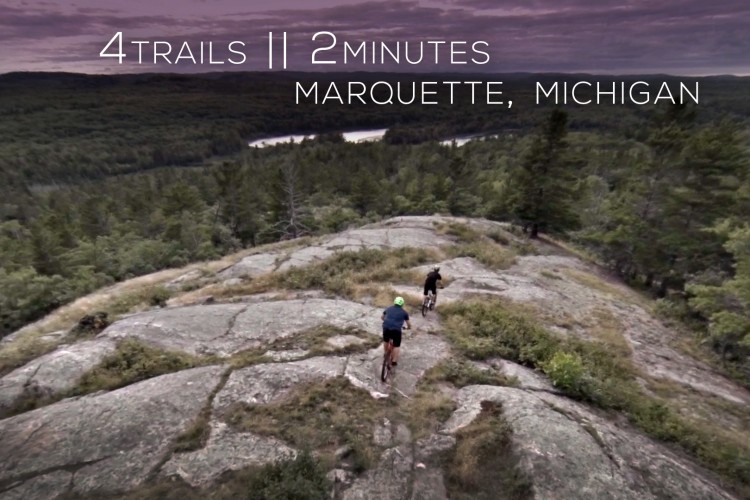We’ve been hearing rumblings from all corners of the United States of significant IMBA Chapters leaving the Chapter Program, and others considering leaving. In short our question is, “why?” We reached out to representatives from several Chapters who have left, including the Chequamegon Area Mountain Bike Association (CAMBA), Minnesota Off-Road Cyclists (MORC), Salem Area Trail Alliance (SATA), and Verde Valley Cyclists Coalition (VVCC) to get concrete answers. We also contacted the San Diego Mountain Bike Association (SDMBA) who have been very vocal about considering leaving, as well as IMBA itself.
Money
By far, the most common answer from these organizations boiled down to one word: “money.” Under the current IMBA Chapter Program, dues collected from chapter members are split between IMBA and the chapter, with 60% going to IMBA at the national level (subsequently referred to simply as “IMBA”), and only 40% staying with the local chapter. As Kevin Loomis, President of SDMBA said, “With 1,200 members averaging $50 per membership, that is a lot of money leaving San Diego.” To crunch those numbers for you, SDMBA is collecting roughly $60,000 in membership revenues every year, and only $24,000 remains with SDMBA. $36,000 is handed off to IMBA
IMBA Chapter Program Overview & Benefits from IMBA on Vimeo.
In their marketing video for the Chapter Program above, IMBA claims that “you can keep 100% of a smaller pie, or get 40% of a larger revenue base,” thereby coming out ahead financially. Based on the feedback from the chapters surveyed, by and large they have not found this to be the case. I asked Ron Bergin, Executive Director of CAMBA, about this issue specifically. He noted that when they became a chapter, their membership numbers actually dipped a little bit, but then rebounded “through efforts on our side to do more focused membership drives.” He continued, “in the end we learned that we needed to be fairly aggressive on our own to try to stimulate renewals and new memberships in any way we could.”
CAMBA never saw the membership increase that the video above claimed would happen: “We never quite did see that spike that we had hoped [for.] And that was in fact one of the selling points for becoming part of the chapter program–we’d recoup a lot of [the shared revenue].”
Not enough benefits

With 60% of the money leaving the chapter and going directly to IMBA, the question that all of these chapters are asking themselves is, “what benefit is IMBA providing to us in exchange for the 60% split, and is it worth it?” For the four chapters that have left, they’ve answered “no” to that question. But interestingly, the things that the individual chapters want from IMBA, and what they think IMBA is providing or doing well, varies pretty widely from chapter to chapter.
Generally speaking, most chapters agreed that having IMBA do all the leg work to manage memberships and renewals is one of the major benefits of being a part of the program. “One major benefit we hear over and over from our chapters is the ability to have IMBA handle all aspects of membership processing—think credit card brokering, technology assessments, recruitment tools, data tracking and financial reports,” said Dave Wiens, Executive Director of IMBA.
However, the technology is currently lagging behind the times a bit. “Operationally [IMBA needs] to bring the organization into the digital age by updating their website and CRM system,” said Loomis of SDMBA. Wiens acknowledged this technological shortcoming himself, saying:
“As is a common case with non-profits, we let our technology lag while we were full-steam-ahead focusing on our mission. And dated technology has hurt us now, no doubt about it. We are working on a website redesign and testing a mobile platform that will make it easier for chapters to recruit more members at trail work days, events and meetings. These changes will be huge for chapters, for our membership team and for IMBA staff.”
Changes to the Chapter Program
Unfortunately for IMBA, one of the major benefits they provide isn’t offering the performance it once did, and some chapters don’t seem to have the patience to wait for change to happen. Kevin Adams outlined some of the key changes in the new Chapter 3.0 Program in a recent article, but some chapters, upon hearing that the program was changing, decided to leave before learning about those changes.
[see_also id=”213097″][/see_also]
“IMBA provided notice to MORC on December 1st that the Chapter Program, and therefore our current Chapter Charter Agreement, would be ‘going back to the drawing board,'” said Matt Andrews, Executive Director of MORC. “This means the current terms and conditions of the Charter would change, and since IMBA could not readily provide details as to what the new Charter would entail, it made little sense for MORC to remain tied to that Agreement.” However, despite their departure from the Chapter Program, MORC might consider becoming a chapter once again, depending on how the Chapter 3.0 Program plays out.
Dave Wiens entered into the midst of this transitional fray when he became IMBA’s Executive Director in February. When asked about the changes rolled out in Chapter 3.0, Wiens said:
“The current changes to the chapter program are one component of a continuously evolving program—we know there will always be things we can keep working to improve. Chapter 3.0 solicited feedback from chapters to settle on the highest priority components of the program to keep and to change, including moving to a 50/50 revenue share with chapters to help them develop and maintain more places to ride.”
Changing the revenue share definitely addresses the number one problem cited by all chapters, but what remains unclear is if putting 10% of the pie back in SDMBA’s pocket will be enough.
Advocacy concerns

Many of the clubs expressed concerns about IMBA’s advocacy efforts, but the analysis of those efforts varied widely. Bergin of CAMBA said,
“We don’t face a lot of the challenges that clubs might face in other parts of the country, say in regard to land access and those types of challenges. We’ve always been pretty fortunate to have really good cooperation with the land managers we work with. I see that as one of the big things that IMBA does nationally is with those types of issues.”
So one of the reasons that CAMBA has chosen to leave is because they think IMBA is doing a lot of advocacy work, and that it doesn’t benefit them. Other chapters, like SDMBA on the other hand, think that IMBA’s advocacy work is misguided. “IMBA has lost touch with advocacy on the ground resulting in policies out of step for many chapters,” said Loomis of SDMBA. “Until recently, IMBA was doubling down on unpopular stances such as being against mountain bike access within wilderness and a pro industry eBike policy,” he continued.
Other clubs are concerned about the split of local advocacy versus national advocacy, with many local IMBA positions having been terminated recently. Some of those employees, like Matt Andrews with MORC, were able to transition into full-time positions with local clubs. Others weren’t nearly as lucky.
Continued Support for IMBA

Despite leaving the Chapter program specifically, all of the four departed clubs surveyed say they still believe in IMBA’s mission and that they still want to be involved in supporting that mission. Whether these organizations will give an annual donation to IMBA that they feel is appropriate or remain affiliated as a club and not a full-blown chapter, the support for IMBA is still quite positive.
As Andrews of MORC said, “Even if the new Agreement is viewed as unfavorable, MORC plans to remain a Supporting Organization via annual contribution.” This was a sentiment echoed by all of the Chapters.
Interestingly, the organization we surveyed that seems to be the most opposed to IMBA’s current trajectory and leadership is the one that is still a chapter: SDMBA.
“[IMBA] needs to start communicating as one voice and always support mountain bikers. There is no room for mountain bikers to speak against mountain bikers. This failure has caused our local members to push away from IMBA. Furthermore, IMBA needs to drop their continued statements against the Sustainable Trails Coalition which SDMBA supports both philosophically and financially. If IMBA continues to fight STC and the advancement of cycling within Wilderness, our members would force us to leave,” said Loomis.
SDMBA also spoke out against some of the current IMBA leadership:
We also want the board to bring chapter leaders onto the board while reducing industry representation (currently over 40% of the board is from the cycling industry). The new Chairman (Chris Conway) has a fresh, open and transparent leadership style which makes us hopeful. SDMBA has already made it crystal clear to IMBA (in writing) which board members should resign immediately, including Bob Winston (past Chairman). The actions or inactions of certain board individuals has resulted in IMBA’s current demise. Furthermore, many of these board members rebuffed calls for change and refused transparency. While IMBA Boulder slashed personnel by 50%, not one Board Member has been terminated – that is unacceptable. While some of these members term out late 2017, they should leave now.

“What do you think IMBA needs to do to be successful?”
At the end of the day, very few mountain bikers want to see IMBA fail. Despite disgruntled ex-members and chapters leaving the program, ultimately I think mountain bikers want to see mountain bike access preserved and expanded, and want to see mountain biking succeed on many levels. To accomplish this, change is needed, yet everyone’s perspective on exactly what needs to change differs.
I concluded my respective interviews with these five chapters and Dave Wiens by posing the question, “What do you think IMBA needs to do to be successful?” Here are their unabridged answers to highlight the diversity of needs experienced by these various organizations, and the difficult waters that IMBA must navigate as they move forward from here.
Dave Wiens, Executive Director of IMBA
Technically, I asked Wiens a slightly narrower question, specifically: “What else do you think IMBA needs to do to make the Chapter Program successful?”
“First and foremost, I’m committed to talking to our chapters more regularly. I want chapters hearing from us, and I want us hearing from them too. There is so much incredible work happening on the ground for mountain biking. We need to work together to share these stories.
With our region directors, we are making a transition from a face-to-face system to a virtual environment. Staff used to spend many hours a week on the road connecting with an ever-growing chapter network, often unable to take calls or respond to requests. We have the opportunity to provide even more service to chapters through virtual offerings. Part of this transition is determining which tools to use, training our staff, and working with chapters to fully utilize the offerings. This is tied closely to the website work and will include a redesigned online library and resource center so chapters and volunteers have the information they need, when they need it.”
Matt Andrews, Executive Director of MORC
“This is more of my personal opinion, rather than that of the MORC organization. If the Chapter Program is to continue, and thrive, IMBA needs to be present at the local level. It is a commonly stated phrase that “all politics are local” and, whether we like it or not, mountain biking is political. Additionally, the clubs and associations behind the trails are grassroots, boots on the ground, localized groups. So, in essence, “all mountain biking is local.” I believe IMBA should choose a direction as being involved in local politics (Chapter Program) or national politics (National Advocacy efforts); attempting to do both seems too large a scope and task to be successful.”
Ron Bergin, Executive Director of CAMBA
“That’s a hard one. I know they have strength in their ability to make the contacts at the federal level and the state level when there are issues regarding access or other legal matters. I know some aspects of the program they’ve offered have been really positive; the IMBA Trail Care Crew has been a great thing. We’ve had several visits here and we’ve learned a lot. That’s kinda what got us on the way to being able to build trails better and more sustainably. They have some interesting initiatives with the Epic Rides and Ride Center programs, both of which we’ve taken advantage of over the years. They offer good things like regional summits, and I attended the world summit last year–those are great events.
Organizationally, I don’t have a good enough sense to make a real profound comment on what they might need to do financially. Maybe just pull back in a little bit and focus on the things that you do best and find a way to assist smaller clubs, and chapters, with things that they need–advice and counseling, even some hands on once in a while.”
Kevin Adams, VVCC Board Member
“First, get their financial house in order. Second, there’s been no shortage of strategy out of IMBA. What it’s fallen short of is execution. The formula for success is simple: Strategy = Execution. I give Dave Wiens great credit for making the Chapter 3.0 decision. I think that Dave’s going to find that his current strategy will not survive first contact with reality, and unfortunately, IMBA’s financial issues, if not timely addressed, will severely hamper Dave’s ability to adapt and improvise IMBA’s way to success.”
Jeff McNamee, President of SATA
“From SATA’s perspective, IMBA might consider focusing on what it has historically been very successful at – advocacy/communication at the federal level and grassroots education. Moving forward, IMBA will need [to] reconcile the perception by many clubs, including SATA, that the IMBA Chapter Program is/was asking small local (overwhelmingly volunteer) groups to ‘prop up’ IMBA, rather than the other way around.”
Kevin Loomis, President of SDMBA
“IMBA needs focus on WHY they exist and then act on that answer. Operationally they need to bring the organization into the digital age by updating their website and CRM system. They need to improve communications through all channels to attract members while engaging new advocates. They need to think differently and listen/embrace other MTB organizations within the US! IMBA also needs to rethink their funding model. As is too often the case, the cycling industry demands a ‘pay for play’ role from IMBA – this is unacceptable! All industry funds need to be agnostic and solely to support mountain biking. If IMBA takes the easy money, they will become a toothless industry puppet – that cannot happen. Further, the board needs to regain credibility within the community. The board needs to hang a sign stating – ‘Under NEW MANAGEMENT!’ This should start by removing board members who were against transparency, fought against change, and oversaw the fall of IMBA. Those leaders need to be replaced with forward-thinking, change-focused, cycling advocacy leaders with turn-around experience.
SDMBA wants IMBA to succeed and is willing to help wherever possible. We are in agreement with Dave Wiens stating ‘together we can do so much.’ However, this requires drastic and immediate change. Without change and strong leadership, IMBA will no longer be the voice of the mountain biker. That would be a sad day for all of us.”




















